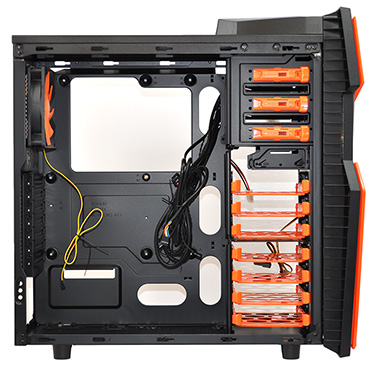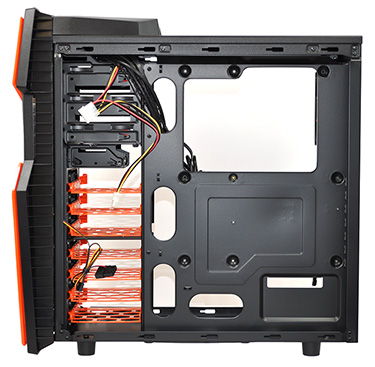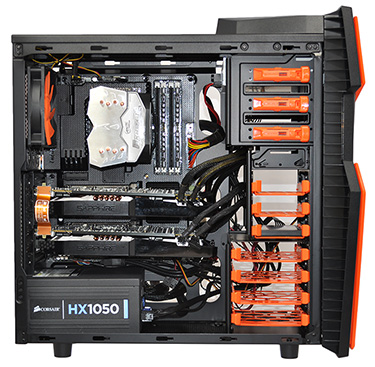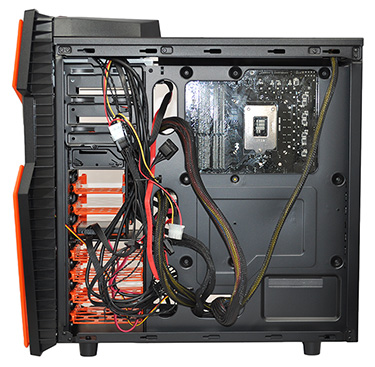Inside the Cougar Challenger
Cougar has gone to extremes to make the Challenger look unique on the outside, but step inside the mid-tower frame and things begin to look mighty familiar. Keeping to the modern-day chassis rule book, we have a PSU bay in the bottom corner (complete with dust filter), seven expansion slots, a good-sized cutout in the motherboard tray, a decent selection of cable-routing holes and a dedicated column of storage bays.
The £90 asking price includes two fans - a 200mm front intake with red LEDs and a 120mm rear exhaust - but a slew of additional mounts are available. A pair of 120/140mm fans can be installed inside the roof of the chassis, a 120/140mm fan can be attached to the side panel, and there's room for another 120/140mm intake at the bottom.
Cooling potential should be ample and Cougar's layout is for the most part logical and expansive. Three tool-free 5.25in bays make light work of optical drive installation, an external 3.5in drive bay has been included and is always useful for adding a third-party fan controller, and the internal storage bays have multiple configurations, too. The default selection of seven 3.5in drive bays is split across two cages (four bays at the bottom, three at the top), and the uppermost cage can be re-sized to support 2.5in trays or removed altogether to make way for extra-long graphics cards.
Our high-end test platform slots in easily enough, but there are a couple of usability quirks to be aware of. If you do plan on re-sizing or removing the central hard-disk cage, be sure to do so prior to installing the motherboard. The way Cougar has positioned the two Phillips-head screws makes it practically impossible to unfasten the bracket once an ATX board is in place. A shame, really, as the use of simple thumbscrews would have helped get around any such obstruction.
More importantly, take your time in ensuring a clean-and-tidy build. Our cable clutter didn't seem too bad at first - there's plenty of room behind the motherboard tray - but the chassis' side-panel fastenings make it very difficult to get the rear panel back on. All 10 slot-in clips need to be in place for the panel to sit flush, and having any amount of cable bulge makes for hugely frustrating alignment. We had to use our hands, elbows, and a knee in order to get it on.
There is room for improvement, but the overriding impression when working with the Challenger is one of indifference. Despite the ostentatious exterior, there's not a lot happening on the inside and while most of it just works, the chassis rarely manages to impress.
It feels like a £50 case, and probably should be when you consider what consumers are paying in other territories. Over in the US, Newegg.com has the Challenger available for $86. Yet here in the UK we're being asked to fork out £90 at Amazon.













